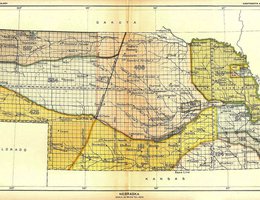

Native American tribes, including the Omaha, Oto, Missouri, Pawnee, Arapaho and Cheyenne, all ceded (gave up) land in Nebraska to the U.S. government. In all, there were 18 separate treaties between 1825 and 1892 in Nebraska alone. These treaties were a part of a much larger pattern of land transfers that allowed an explosion of European settlement.
By 1850, the tribes had seen more people moving through along the Platte River. The Homestead Act, which gave free land to settlers, meant that large numbers of immigrants were now going to stay in the area. What were the relationships among the different tribes and the settlers? Did all the various tribes live together peacefully during this time? Were they free to move about? How did they become confined to reservations?
In this section, there are two major stories about Native Americans during the settlement period. First, there is the story of how native people met the challenges of living on this plains landscape. And second, there is the story of conflict as more and more people tried to live on the same land.
Discussion Questions:
How did Native Americans view the arrival of white Europeans?
What crops did early Native Americans plant that are similar to those grown by the settlers who moved in later?
What crops are grown today in Nebraska?
Why do farmers in Nebraska raise those crops?
What are some differences in the way Pawnees farmed compared to farmers in Nebraska today?
Were Native Americans in Nebraska subsistence farmers or commercial farmers?